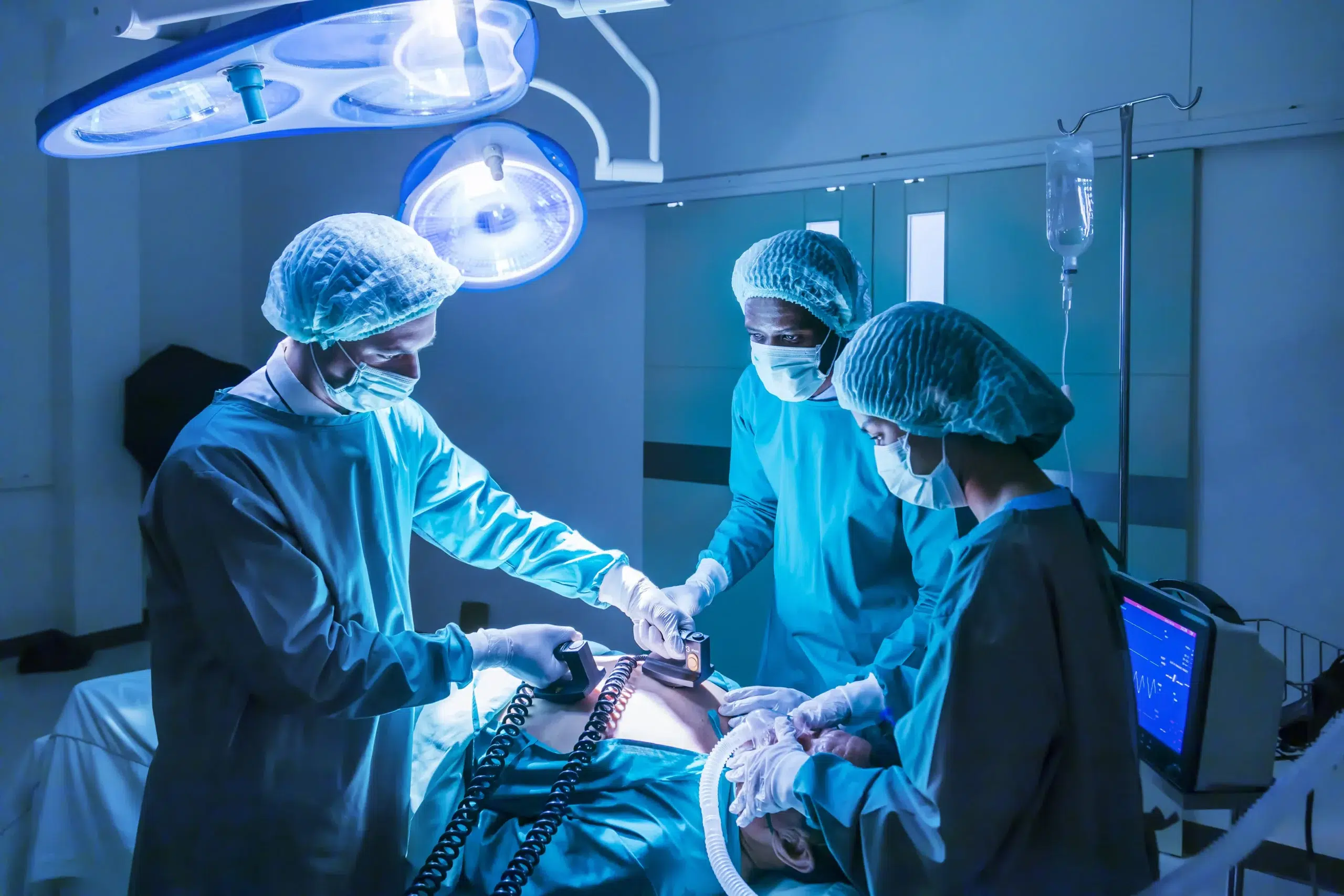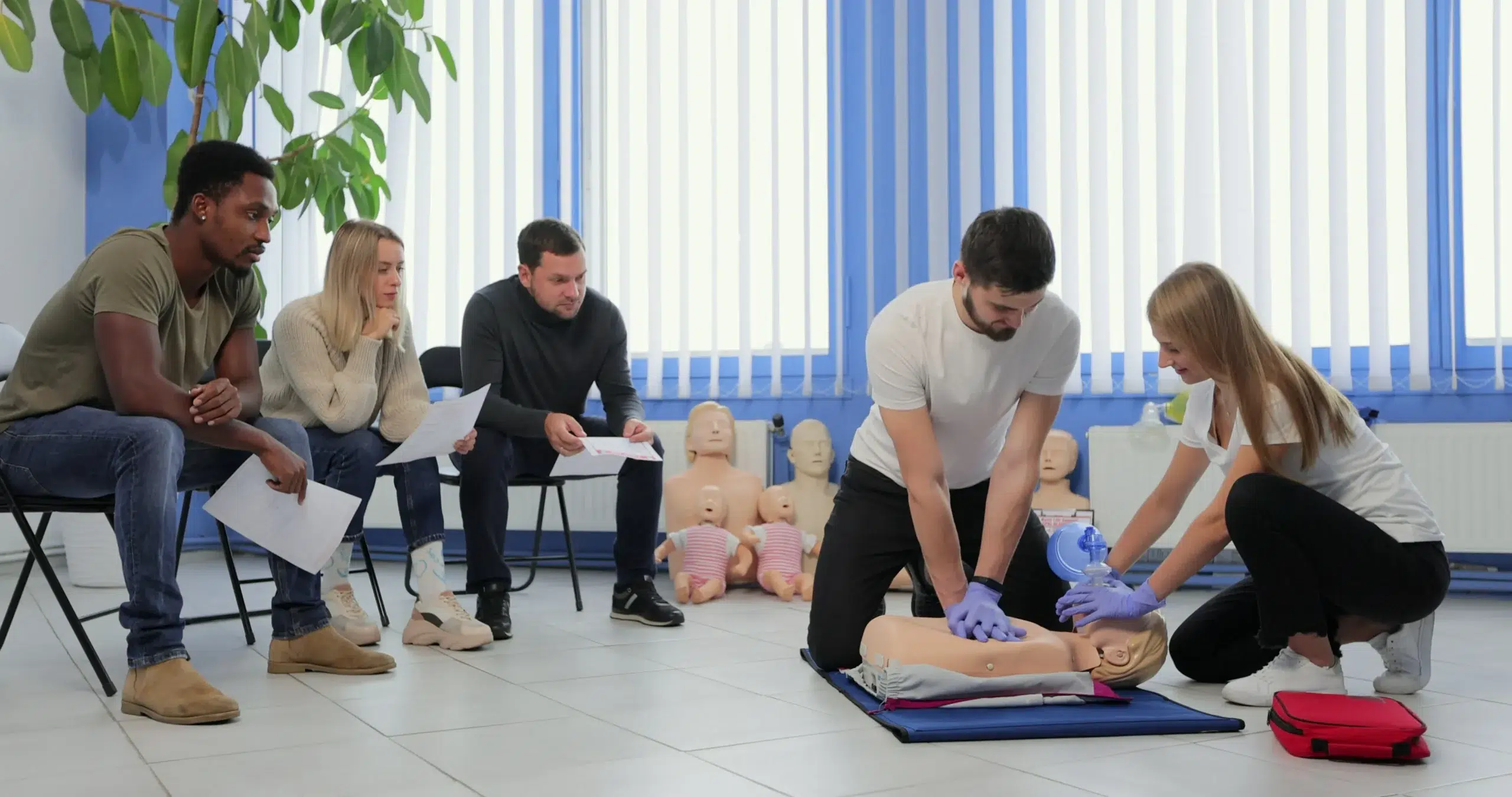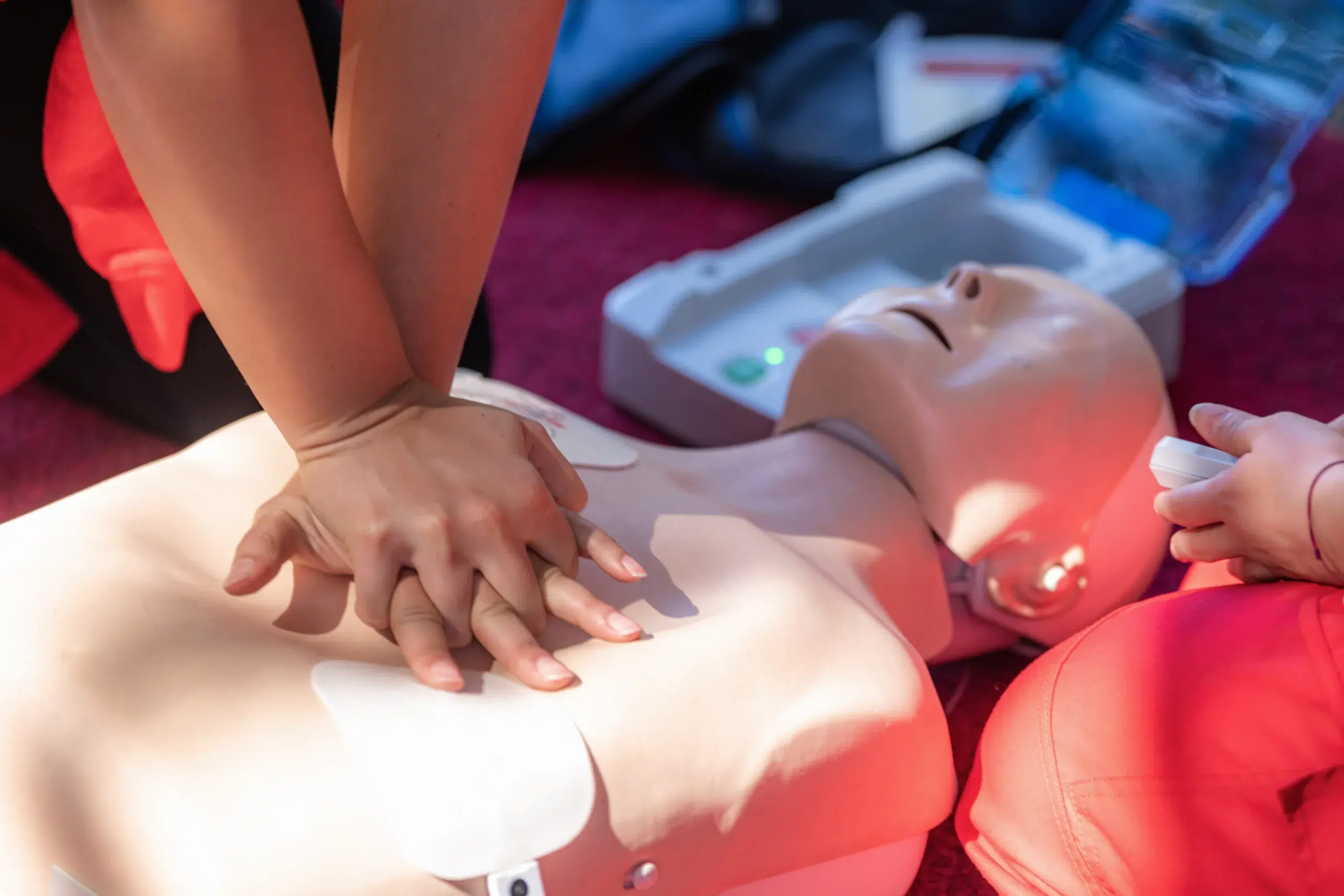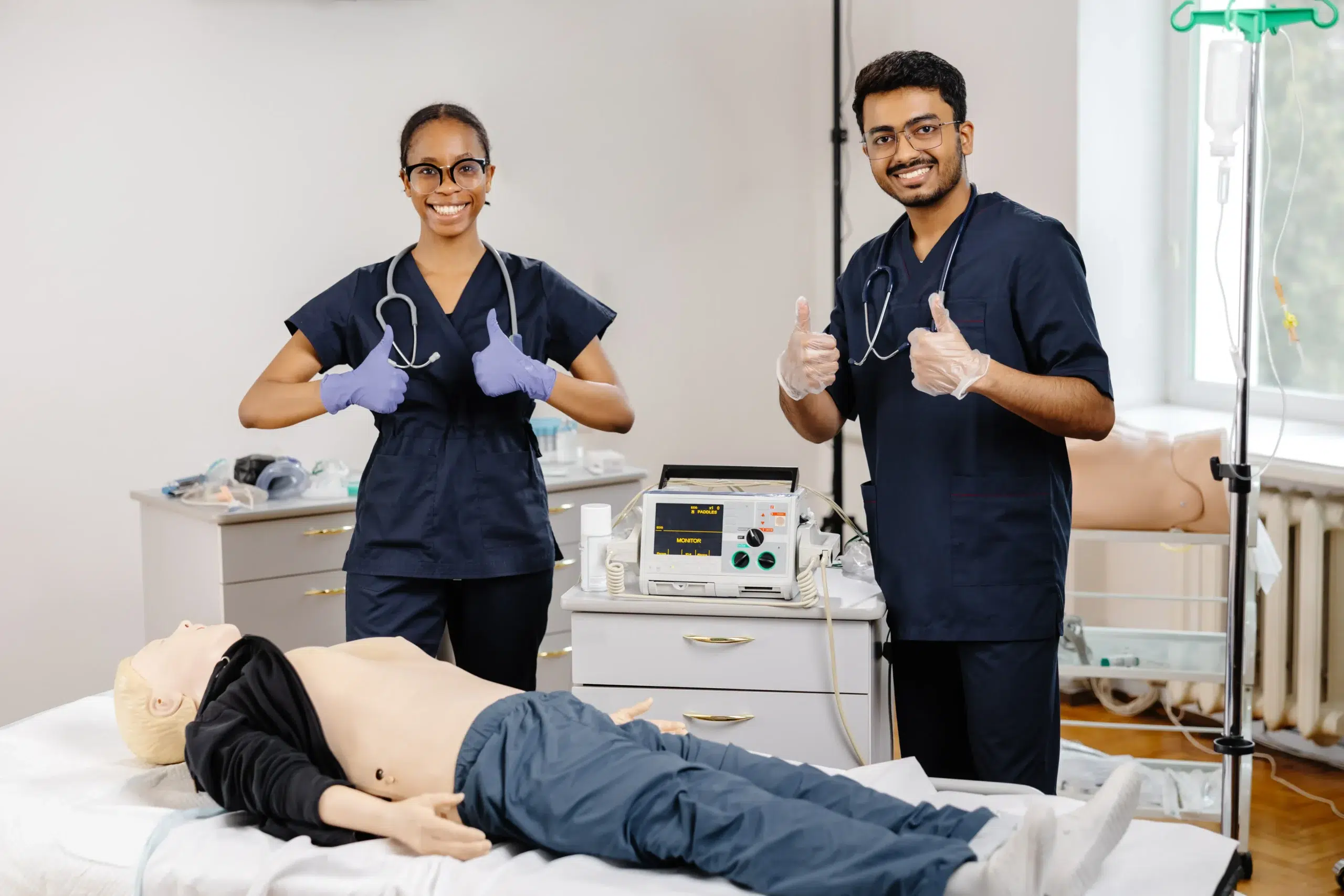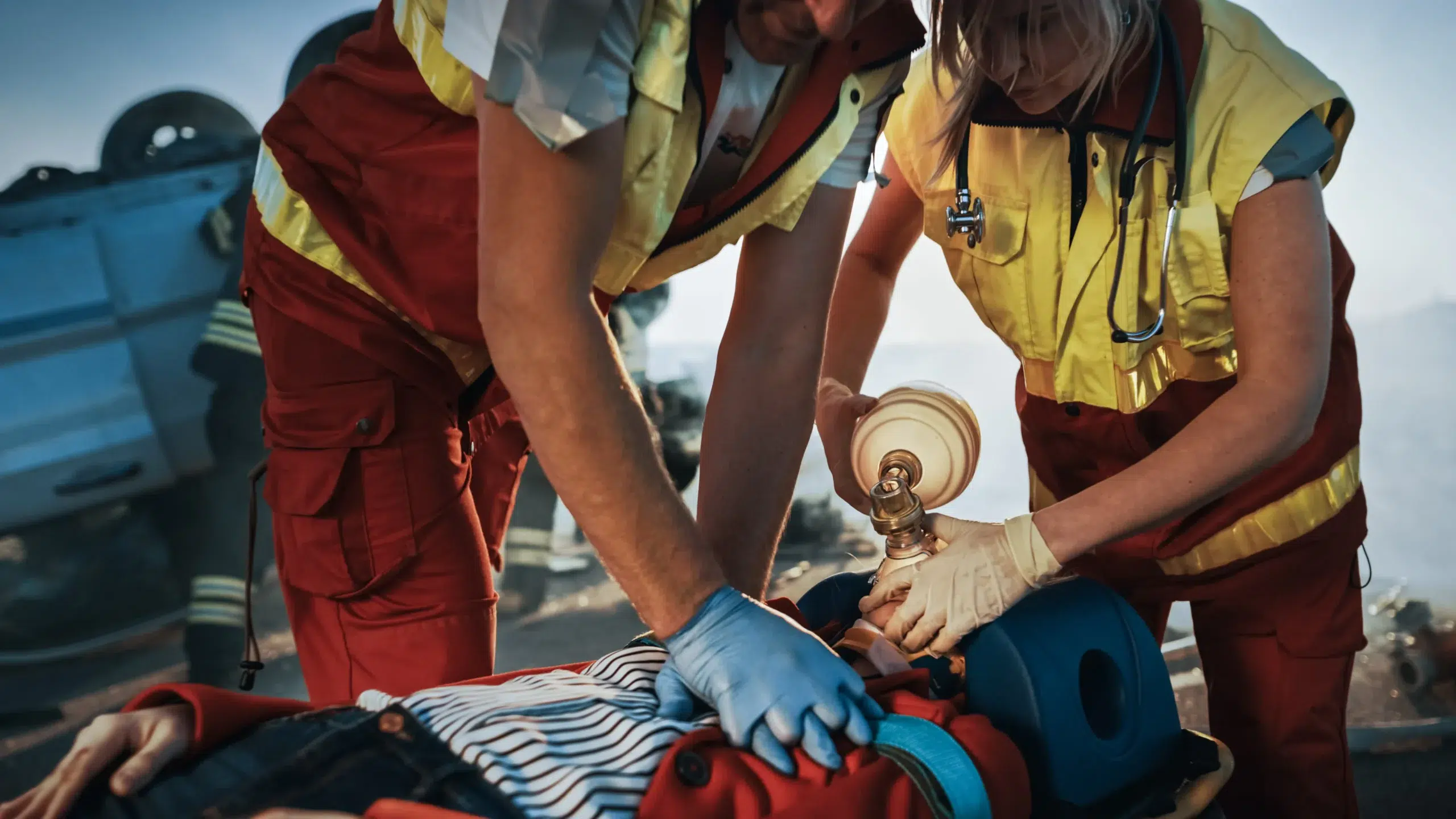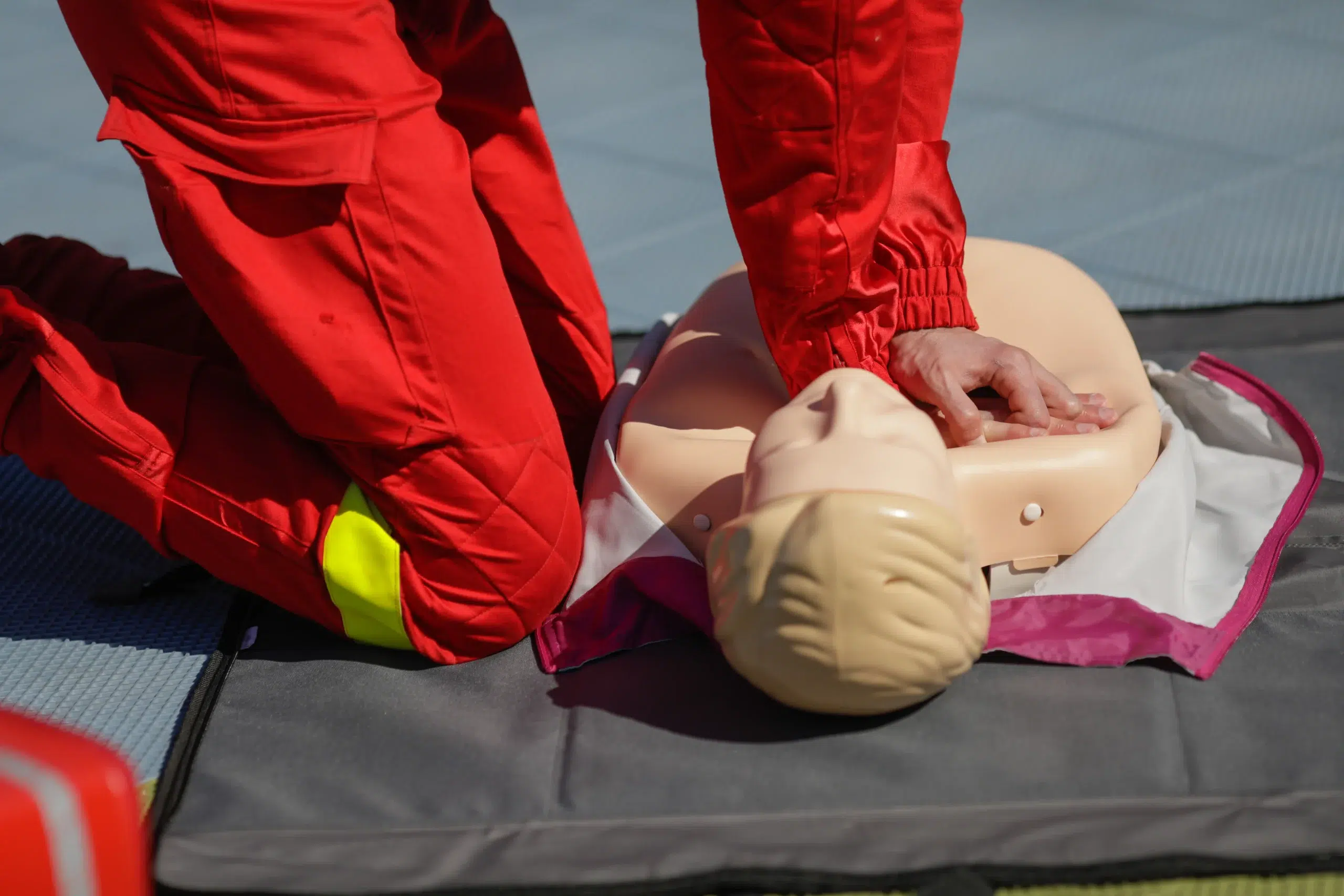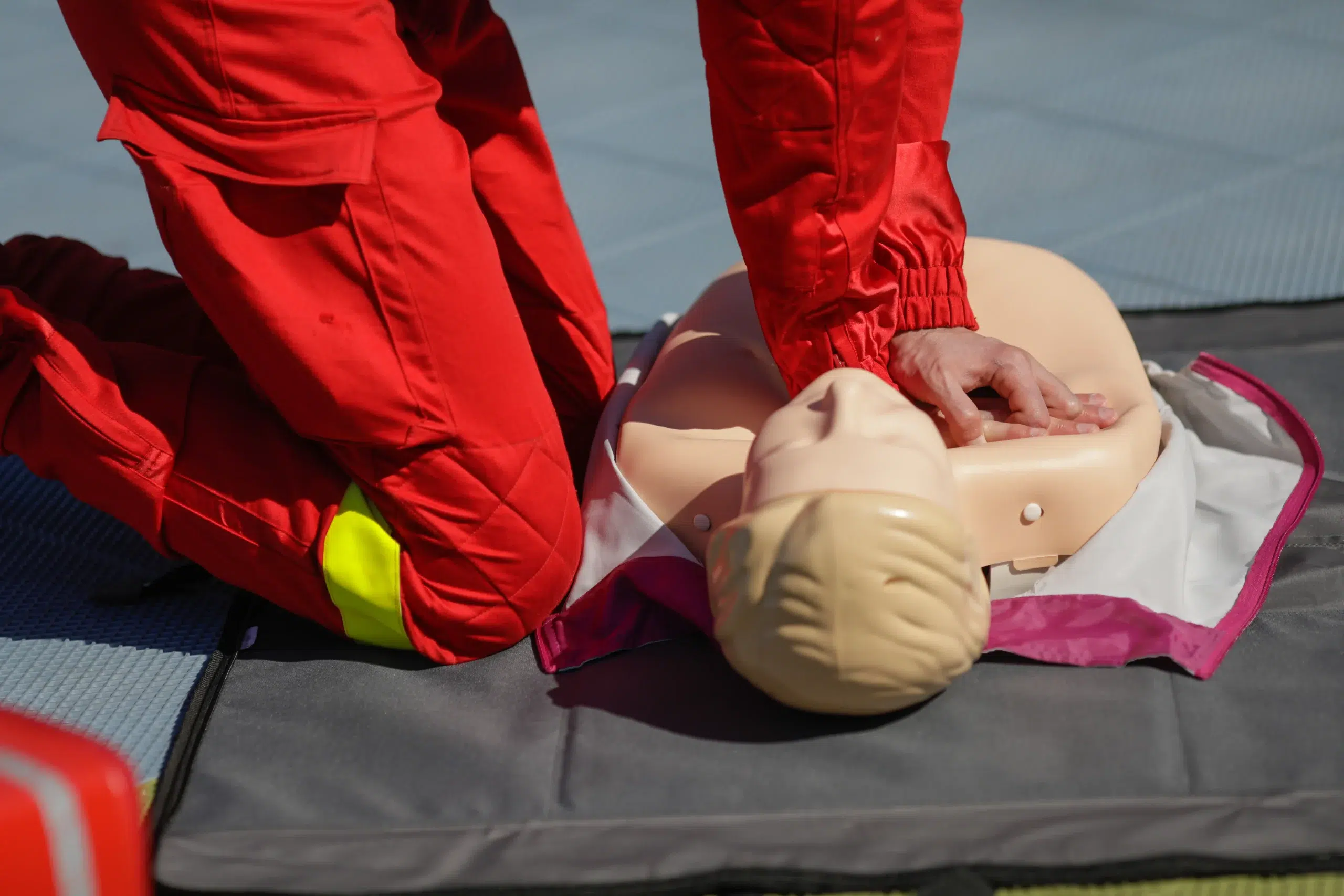The history of CPR is a testament to human ingenuity and our unwavering commitment to saving lives. From rudimentary resuscitation methods to the sophisticated techniques taught in San Jose CPR classes today, the evolution of CPR is a story of progress and innovation. This article explores that history, highlighting key advancements and the ongoing efforts to improve CPR effectiveness. We’ll also guide you through the different types of San Jose CPR classes, helping you find the right training to become a prepared and confident responder in emergencies. Join us as we uncover the past, present, and future of CPR.
Key Takeaways
- CPR certification fits your life: Find a CPR class in San Jose that works for your schedule and learning style, whether you prefer in-person instruction or blended learning.
- Confidently respond to emergencies: CPR training equips you with the skills to recognize cardiac arrest, perform chest compressions and rescue breaths, and use an AED. Regular practice builds confidence and muscle memory.
- Become a community lifesaver: Learning CPR empowers you to help others in critical moments. Join the network of trained responders and contribute to a safer San Jose.
CPR: From Ancient Techniques to Modern Practice
CPR has a rich history, evolving from basic resuscitation attempts to the sophisticated techniques we use today. Understanding this evolution underscores the importance of continuous improvement and evidence-based practices in saving lives.
Early Resuscitation Methods
While the concept of reviving someone has been around for centuries, early resuscitation methods were rudimentary. References to resuscitation techniques appear as far back as the second century, with documentation by the physician Galen. However, more focused efforts to revive individuals, especially drowning victims, began to emerge in the 18th century. Various approaches were explored during this time, laying the groundwork for future advancements. For a deeper dive into the history of CPR, check out the Red Cross resource.
CPR Milestones
The 18th and 19th centuries saw significant milestones that shaped modern CPR. In 1740, mouth-to-mouth resuscitation was introduced, marking a critical step in assisting those struggling to breathe. Later, in 1809, the use of electrical stimulation was explored as a means of reviving the heart. The early 20th century saw the introduction of epinephrine in 1903, further refining resuscitation efforts. While the idea of chest compressions predates the 20th century, it wasn’t until 1959 that they became a core component of CPR, thanks to the research of Dr. William Bennet Kouwenhoven in 1960, solidifying the importance of chest compressions and earning him the title “Father of Cardiopulmonary Resuscitation.” Learn more about the history of CPR from SureFire CPR.
Modern CPR Techniques & Guidelines
The year 1962 marked a turning point in CPR history, with organizations like the American Red Cross, American Heart Association, and Industrial Medical Association formally endorsing CPR techniques. This standardization led to wider adoption and more consistent training. Modern CPR combines chest compressions and rescue breaths, a powerful combination for maintaining blood circulation and oxygenation. Importantly, CPR guidelines are continually reviewed and updated to reflect the latest scientific research and best practices, ensuring that rescuers are equipped with the most effective techniques. The Red Cross offers further details on the evolution of CPR.
CPR Certification in San Jose: What You Need to Know
So, you’re looking into CPR certification in San Jose? Great! Whether you’re a healthcare professional, a concerned parent, or just someone who wants to be prepared for emergencies, getting certified is a smart move. This section covers the basics of CPR training in San Jose, including different class types, the certification process, and why staying up-to-date with your skills is so important.
CPR Class Types
You’ll find a few different types of CPR classes available in San Jose, catering to various needs and learning styles. Many organizations, like the American Red Cross, offer both in-person and blended learning options (a combination of online coursework and in-person skills sessions). In-person classes provide hands-on training and direct interaction with instructors. Blended learning offers more flexibility for those with busy schedules. Safety Training Seminars offers a variety of courses, including BLS, ACLS, and PALS certification, designed for healthcare providers. Choosing the right class format depends on your personal preference and learning style.
Certification Process & Duration
The certification process typically involves completing the required coursework (whether online or in-person) and then demonstrating your skills in a practical exam. Once you successfully complete these requirements, you’ll receive your CPR certification. This certification is generally valid for two years. Specific requirements might vary slightly depending on the certifying organization.
Why Recertify?
It’s important to remember that CPR techniques and guidelines can change as medical knowledge advances. Recertifying ensures your skills are current and aligned with the latest best practices. Plus, regular practice builds confidence and muscle memory, so you’ll be better prepared to respond effectively in a real emergency. Consider it a refresher that reinforces your life-saving abilities.
Choosing the Right CPR Class in San Jose
Finding the right CPR class can feel overwhelming with so many options. This guide will help you understand the different types of CPR certification available in San Jose and key factors to consider when making your decision.
American Heart Association Courses
The American Heart Association (AHA) sets the standard for CPR training. AHA courses, like Basic Life Support (BLS), Advanced Cardiovascular Life Support (ACLS), and Pediatric Advanced Life Support (PALS), are widely recognized and accepted. These courses cover core CPR skills, often including AED training. In San Jose, you can find various AHA-certified training centers offering these courses. AHA courses are an excellent choice for healthcare providers and anyone seeking a comprehensive understanding of CPR.
Red Cross CPR Training
The American Red Cross also offers CPR and First Aid training in San Jose. Their classes provide a solid foundation in CPR techniques and emergency response. The Red Cross offers various learning formats, including in-person classes and blended learning that combines online modules with hands-on skills sessions. This flexibility lets you choose a learning style that fits your schedule. You can explore Red Cross CPR classes on their website.
Safety Training Seminars
Safety Training Seminars specializes in CPR training in San Jose. We focus on practical skills and real-world scenarios to build your confidence in responding to emergencies. Our instructors are experienced professionals dedicated to providing high-quality training. We offer various courses, including CPR and First Aid, to meet diverse needs. Our low price guarantee ensures you receive excellent training at a competitive price.
Class Selection Factors
When selecting a CPR class, consider these factors:
- Certification Type: Determine the specific certification you need based on your profession or personal goals. Healthcare providers typically require BLS, ACLS, or PALS certification, while others may need general CPR and First Aid certification.
- Course Format: Decide if you prefer an in-person class for hands-on learning or a blended/online option for more flexibility.
- Provider Reputation: Choose a reputable training provider with experienced instructors and positive reviews.
- Cost: Compare prices and look for available discounts or group rates.
- Location and Schedule: Find a class that’s conveniently located and offered at times that work for you.
By considering these factors and exploring the different options, you can choose the CPR class in San Jose that best meets your needs and prepares you to handle emergencies effectively.
CPR Training & Community Safety
CPR training is about more than just individual skills; it’s about building a safer community. When more people know CPR, we create a network of potential lifesavers ready to respond to emergencies.
Improve Survival Rates
Studies show that CPR performed immediately before paramedics arrive can nearly double or even triple survival rates from cardiac arrest. These first few minutes are crucial. Learning CPR empowers you to make a real difference in someone’s life during a critical moment. Access to timely CPR can dramatically increase the chances of survival and improve outcomes for those experiencing cardiac emergencies. This underscores the importance of widespread CPR training within communities. For more information on the importance of CPR, visit San Jose CPR Certification.
Empowering Bystanders
CPR is easier to learn than you might think. Anyone can learn it, not just medical professionals. Even basic CPR, like chest compressions, can significantly improve someone’s chance of survival. Dispelling common CPR myths empowers more people to act confidently in emergencies. Understanding the realities of CPR and addressing legal concerns can encourage more bystanders to take action when needed. Clear, accessible training can equip individuals with the knowledge and confidence to provide immediate assistance, potentially saving lives. For more information on common CPR misconceptions, see this article on debunking CPR myths.
Building a Prepared Community
Free CPR classes, like those sometimes offered in San Jose, equip residents with the skills and confidence to act swiftly in cardiac emergencies. These community-based initiatives are vital for building a network of trained responders. Organizations like Safety Training Seminars offer a range of courses, including American Heart Association BLS courses and CPR and First Aid training, designed to empower individuals to respond effectively in emergencies. Their commitment to providing accessible training contributes to a more prepared and resilient community. A community equipped with CPR skills is better prepared to handle emergencies and support positive outcomes. You can find more information on free CPR classes in San Jose at San Jose CPR Certification.
Essential CPR Skills
CPR is a lifesaving technique that helps maintain blood flow and oxygen levels in someone experiencing cardiac arrest. Learning CPR equips you with the skills to respond effectively in such emergencies. Let’s break down the essential components:
Chest Compressions & Rescue Breaths
CPR involves chest compressions and rescue breaths. These actions mimic the heart’s pumping action and provide oxygen to the lungs. Effective chest compressions involve pushing hard and fast in the center of the chest, allowing for complete recoil between compressions. Rescue breaths deliver air to the person’s lungs, further aiding in oxygen delivery. For detailed guidelines and techniques, check out the American Heart Association’s resources on CPR.
AED Use
Automated External Defibrillators (AEDs) are portable devices that analyze heart rhythms and deliver an electric shock if necessary to restore a normal heartbeat. While CPR helps circulate blood, an AED can potentially restart the heart. AEDs are designed to be user-friendly, providing voice prompts to guide you through the process. Early use of an AED significantly increases the chances of survival. Learn more about AEDs and their importance from the Red Cross.
Recognizing Cardiac Arrest
Recognizing the signs of cardiac arrest is the first step towards providing effective CPR. A person in cardiac arrest will be unresponsive and won’t be breathing normally, if at all. Immediate CPR is critical for survival after cardiac arrest. The faster CPR is started, the better the chances of survival. Familiarize yourself with the signs of cardiac arrest so you can act quickly. CPR certification courses offered by Safety Training Seminars teach students how to recognize cardiac arrest.
Basic First Aid
While CPR focuses on life-threatening situations like cardiac arrest, basic first aid knowledge complements these skills. Knowing basic first aid and CPR is crucial for helping in emergencies. This includes treating minor injuries like cuts and burns, managing sprains and fractures, and understanding how to respond to various medical emergencies. Combining CPR training with basic first aid knowledge provides a comprehensive approach to emergency preparedness. The Red Cross offers a variety of first aid courses to enhance your skills. You can also find CPR and first aid courses in San Jose through Safety Training Seminars.
Debunking CPR Myths
It’s easy to misunderstand CPR if you haven’t taken a CPR class. Let’s clear up some common misconceptions about this life-saving technique.
Common CPR Misunderstandings
One persistent myth is that CPR always revives someone experiencing cardiac arrest. Sadly, this isn’t the case. While CPR significantly increases the chances of survival, it doesn’t guarantee a successful outcome. CPR’s main purpose is to maintain blood flow to vital organs until professional medical help arrives. Another misconception is that CPR requires mouth-to-mouth resuscitation. Current American Heart Association (AHA) guidelines prioritize chest compressions, especially for untrained bystanders. Hands-only CPR is often sufficient and can make a real difference. You can learn these techniques in our CPR and First-Aid courses.
The Realities of CPR
Many hesitate to perform CPR due to fear of doing it wrong or causing further injury. These concerns are understandable, but imperfect CPR is better than no CPR. The risk of injury is minimal, and the potential to save a life far outweighs any hesitation. Learning CPR through a certified program like ours at Safety Training Seminars equips you with the knowledge and skills to act confidently in an emergency. We address these common concerns in our classes, empowering you to provide effective assistance without fear. Browse our course schedule to find a class that works for you.
Legal Concerns
Some people worry about legal repercussions from performing CPR. Good Samaritan laws generally protect those who provide CPR in good faith. These laws vary by state, but they aim to encourage bystander intervention without fear of lawsuits. Focus on providing assistance to the best of your ability—that’s what truly matters. Our low price guarantee makes accessing this essential training even easier.
Affordable CPR Training in San Jose
Finding a CPR class that fits your budget doesn’t have to be a challenge. Several options are available in San Jose, making high-quality CPR training accessible to everyone.
Compare Course Prices
CPR class prices in San Jose typically range from $65 to $90 for basic CPR certification. This usually covers the training, a two-year certification card, and sometimes a CPR mask or gloves. Knowing this price range helps you evaluate different courses and find the best value. Contact training centers directly or visit their websites for up-to-date pricing. You can explore Safety Training Seminars’ course calendar and CPR and First-Aid courses for their current offerings.
Group & Corporate Discounts
If you’re training a group or your entire company, look for CPR providers that offer group or corporate discounts. These discounts can significantly reduce the per-person cost, making team training more affordable. Reach out to training centers like Safety Training Seminars to inquire about special rates for larger groups. They often have flexible options to accommodate various group sizes and training needs.
Low Price Guarantees
Some CPR training providers, including Safety Training Seminars, offer a low price guarantee, ensuring you get the best possible price. This guarantee means they’ll match or beat competitor pricing, giving you peace of mind. Check if a low-price guarantee is available before committing to a class.
Promotions & Special Offers
Keep an eye out for promotions and special offers that can make CPR training even more affordable. Many providers run periodic discounts or seasonal deals. Check providers’ websites and social media for announcements. Signing up for email lists can also alert you to upcoming promotions.
Related Articles
- Why CPR Is Crucial in Healthcare
- CPR Classes in San Jose: Your Complete Guide – San Jose CPR Classes
- 25 Surprising CPR Facts: San Jose CPR Class Guide – San Jose CPR Classes
- CPR Training in Santa Clara: Your Complete Guide – San Jose CPR Classes
- CPR Myths You Need to Stop Believing – San Jose CPR Classes
Frequently Asked Questions
How often do I need to renew my CPR certification? CPR certifications are typically valid for two years. It’s essential to recertify before your current certification expires to stay up-to-date on the latest guidelines and maintain your skills.
What’s the difference between BLS, ACLS, and PALS? These are all American Heart Association courses, but they cater to different needs. BLS (Basic Life Support) is the foundation for anyone who wants to learn CPR and AED use. ACLS (Advanced Cardiovascular Life Support) is designed for healthcare professionals who manage cardiac arrest and other cardiovascular emergencies. PALS (Pediatric Advanced Life Support) focuses on the specialized needs of infants and children.
Is online CPR certification enough, or do I need an in-person class? While online courses offer flexibility for learning the material, CPR certification requires a hands-on skills assessment with a certified instructor. Many organizations offer blended learning, combining online coursework with an in-person skills session.
What if I’m worried about doing CPR incorrectly during a real emergency? It’s natural to feel apprehensive, but remember that any attempt at CPR is better than none. Training builds confidence, and even basic CPR can significantly improve someone’s chances of survival. Good Samaritan laws also offer legal protection for those who provide CPR in good faith.
Are there affordable CPR training options in San Jose? Yes! Many organizations offer CPR classes at various price points. Look for group discounts, special offers, or low-price guarantees to find a course that fits your budget. Comparing prices and contacting training centers directly can help you find the best value.


